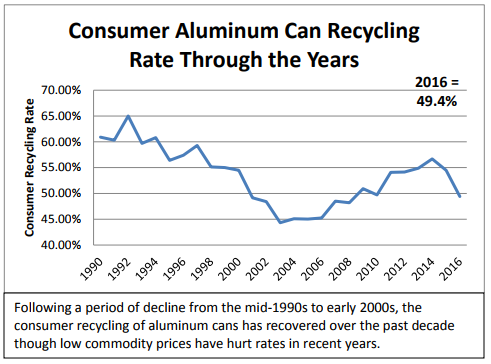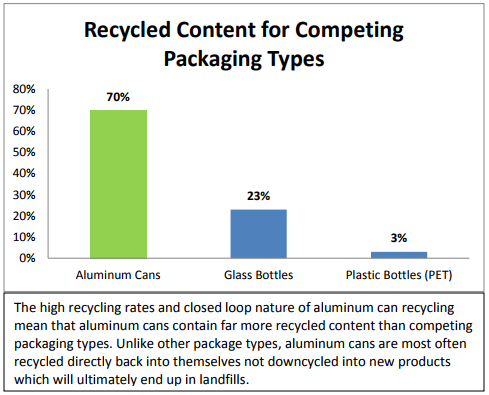

According to the Aluminum Association’s annual key performance indicators report for one of the widely used consumer products – the aluminium can, U.S. UBC recycling rate reported a decline in 2016.

The indicators included Industry Recycling Rate, which measures the amount of used aluminium can scrap recycled by U.S. aluminium producers as a percentage of total can shipment. Another indicator is Consumer Recycling Rate measuring the amount of aluminium can scrap recycled domestically as a percentage of cans available for recycling in the U.S. The rate indicates the performance of municipal recycling programs and is also dependent on YoY fluctuations in metal flows and commodity prices.
For the industry recycling rate, the Association surveyed UBC melting facilities including can sheet producers, can manufacturers and secondary producers of aluminium, representing nearly all can recycling activity in the United States. The industry recycling rate for used beverage cans dropped 0.4% to 63.9% in 2016. In 2016, the industry recycled 1.6 billion pounds of cans out of 2.5 billion pounds of cans shipped.
The consumer recycling rate for UBC declined to 49.4 per cent in 2016, which is the lowest level in last six years. The recycling was down 5.1% from 54.5%in 2015. In 2016, about 1.23 billion pounds of cans were recycled out of nearly 2.5 billion pounds available for recycling.
“The decline in the buying price of UBCs may have prompted sellers to hold onto the metal longer, waiting for prices to recover,” the Association said.

The survey also measured the proportion of recycled aluminium versus virgin aluminium in the average aluminium can. The results from the latest aluminium can recycled content survey showed that recycled content in aluminium can stands at 70%. The rate is an indicator of environmental stewardship of the aluminium can.



Responses






